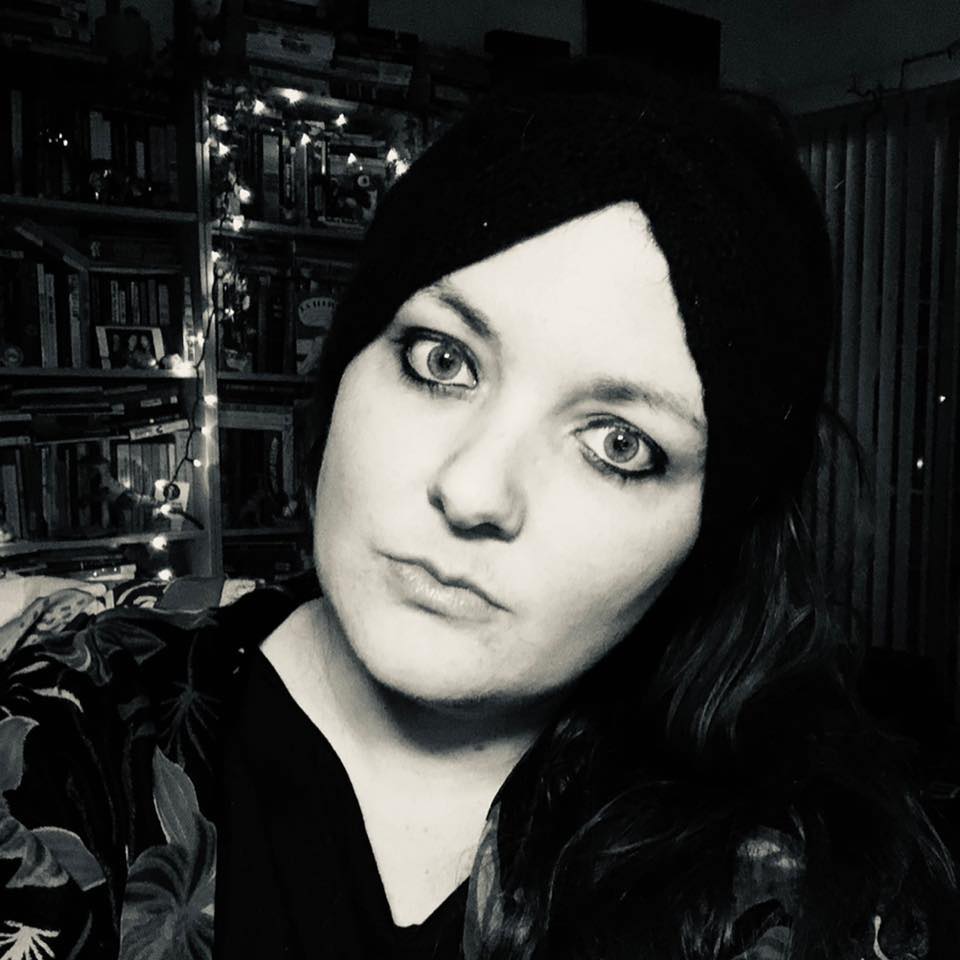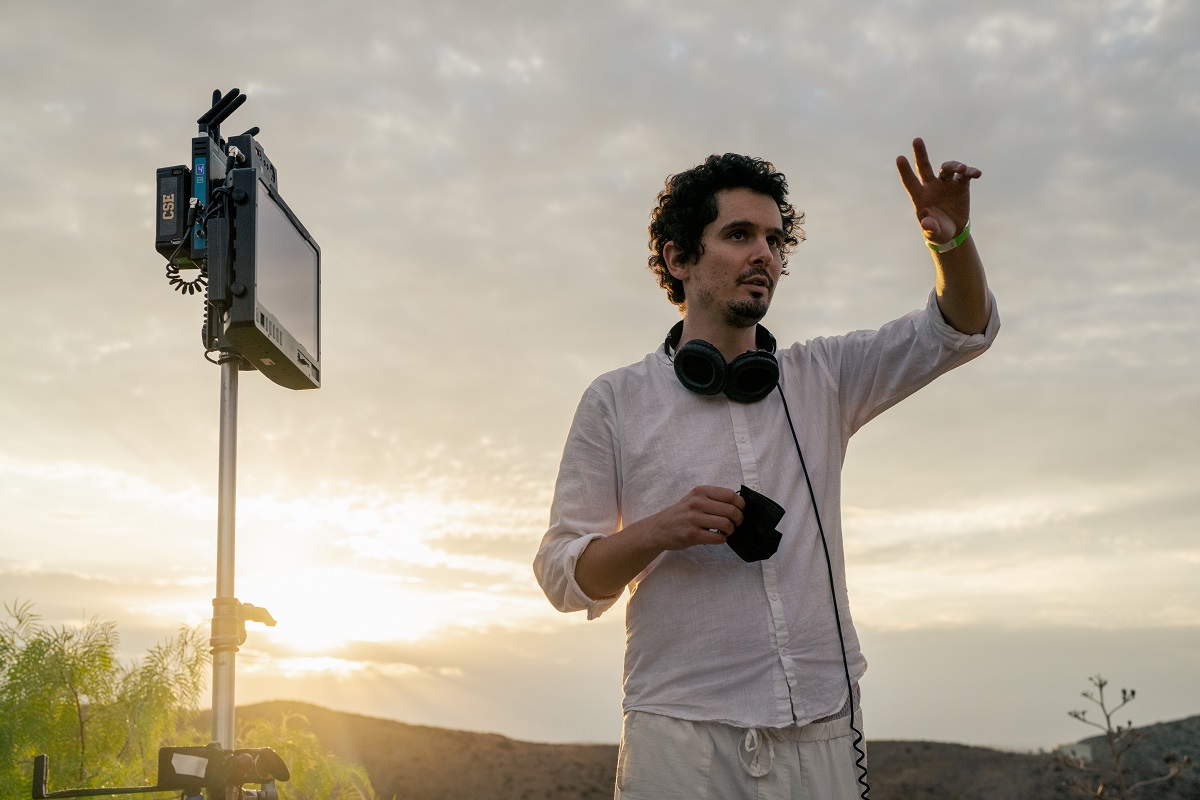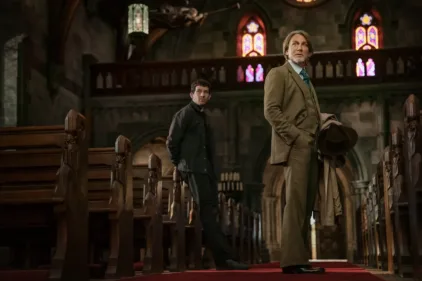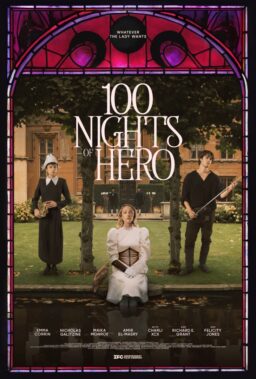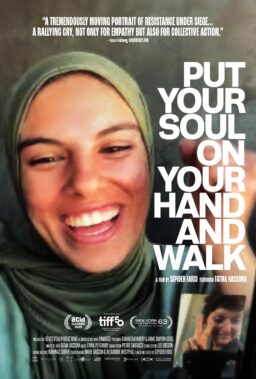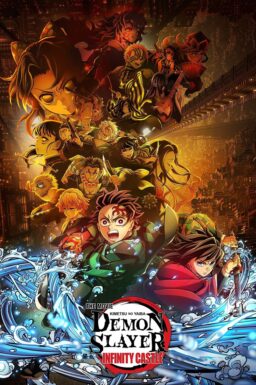Oscar-winning writer/director Damien Chazelle’s latest film is both a crowd-pleasing comedy and a dense text filled with innumerable homages to the films, filmmakers and stars of the time. Vibrant and frenetic, hilarious and melancholic, “Babylon” is an ode to a bygone era, an exploration of an industry in transition, and study of the volatility of innovation.
“Babylon” stars Margot Robbie as Nellie La Roy, a self-proclaimed movie star from New Jersey who charms her way into an orgiastic party hosted by the head of the fictional studio Kinoscope. At the same party are ambitious and talented assistant Manny Torres (Diego Calva) also on his way up the ladder named, matinee idol Jack Conrad (Brad Pitt), gossip columnist Elinor St. John (Jean Smart), jazz trumpeter Sidney Palmer (Jovan Adepo), and the multi-talented Lady Fay Zhu (Li Jun Li). Over the course of three hours these characters find themselves drawn into the highest high and lowest lows that Hollywood has to offer.
Even more so than the Hollywood set romantic fable “La La Land,” for which Chazelle won a best director Oscar, “Babylon” is densely packed with cinematic easter eggs and filmic lore, which aids in the authentic recreation of moviemaking in Los Angeles during the 1920s.
RogerEbert.com spoke to Chazelle over Zoom about the movie industry’s mythology and self-sanitation, researching the wild antics of 1920s Los Angeles, the tragic loss of silent film artistry, and Hollywood as a voracious, unpredictably cruel machine.
The title of your film is a riff on Kenneth Anger’s Hollywood Babylon, which itself is a riff on Babylon the civilization, but I was curious if the goddess Babalon from Aleister Crowley’s occult belief system Thelema, which also arose in LA around the time of the silent film era, was also an inspiration?
Not consciously, but I did get a certain amount of inspiration from the general phenomenon of all these kinds of religions, or you could call them cults, spiritual gatherings and flocks, that were congregating in LA at that time, and that have, in some ways, always congregated in California. Something in the air here. But looking at the 1920s, specifically, there’s a certain kind of fervor in the air that I think really can’t be totally separated from the fervor of people trying to be in movies and the fervor of early movie days, and just the moths to the flame sort of hysteria that I think you see, both in the movies of the time and religion of the time. So there might have been some subconscious reference to that, but not consciously.

A lot of old Hollywood historians and fans have a love-hate relationship with Anger’s Hollywood Babylon. Kevin Brownlow’s oral histories in The Parade’s Gone By… counter some of those stories and Karina Longworth dedicated a whole season of “You Must Remember This” to exploring and debunking the urban legends in the book. What I found in your movie, and what I really liked about it is that you touch on a lot of those myths, but you also touch on the dispelling of those myths at the same time. I’d love to hear your process on how you involved all of that storytelling, both the myths and the debunking, to craft your story.
The one thing I personally love about Hollywood Babylon is if you remove the burden of it being interpreted at all as history and if you just kind of accept that any given content in it could be complete bullshit, and very often is. But I do think there’s a certain kind of truth to the spirit of it, and that it captures a certain reality of the tabloids before tabloids in that early Hollywood time, where there was this kind of unregulated, unhinged vibe in the atmosphere of the industry. Hollywood itself was kind of in the origin stages of figuring out how to tell its own story and how to clean its image and how to manufacture itself. So I think that kind of thing became very interesting to me. How certain kinds of wild instances of behavior would then get refracted or embellished into different things or vice versa. Certain things that seem so outlandish or are so horrible, would get tucked under the rug and cleaned up so that by the time we get a decade later, Hollywood has forgotten them and everything is fine.
That idea of Hollywood as its own laundromat, whitewashing itself and cleaning itself inspired the final few images of Manny walking through 1952 Hollywood. I wanted to lean into the aspects of 1952 Los Angeles that to me felt sort of like Disneyland. The studio gates are so pristine, and you’ve already got tours going on in the lot. You’ve already got trolley cars and things going on. You’ve got this sort of sense of the broader city as this giant metropolis. It’s filled with cars and clogged up, but still feels so manicured and clean. All of which is a little bit of a lie, right? Especially when we see what it had come from. So I think as an antidote to all of that, even if it’s exaggerated, I’ve always appreciated Hollywood Babylon.
I will say for this movie, specifically, The Parade’s Gone By… was probably a more helpful reference. There were also a bunch of books, some articles, and old copies of Photoplay and things like that The Parade’s Gone By… would lead me to or other Kevin Brownlow stuff would lead me to. There’s this great old travelog that I’d never heard of before called Stardust in Hollywood. It’s just an amazing outsider’s look in 1928 of that moment, their take on Hollywood. It’s amazing. Also certain memoirs from people at the time. Obviously, Louise Brooks has a great memoir. Freddie Maas, who was a writer at the time, wrote a loose memoir as well that has some great nuggets about orgies and parties.
Writing the screenplay was a cobbling together of all my favorite little nuggets from these memoirs or these books or these interviews and whatnot. It would never really be the official history-type stuff. Which is why I love what Kevin Brownlow did, ultimately. His book was a lot of people telling their stories, which again a lot of the stuff could be bullshit. That’s part of the beauty of it, too, that it’s so much oral history because there just wasn’t that much documented at the time, the way we’re used to today. So you do have to do a little bit of piecing it together. There’s a kind of tall tale tradition that comes from that, that I just find is part of the magic of that early period of Hollywood where you know, those gaps exist.

I thought the way you wove all of that together was fascinating as silent film is my favorite era and what I know the most about. I kept being like, wait a minute, he did not just do that. It felt like a movie made just for me. So I really appreciate that, as a nerd. During the era your film is set, you have epics like “The Big Parade” and then the very weird transitional films like “The Hollywood Revue of 1929,” which is one of the weirdest movies I’ve ever seen. Were there some gems that you discovered while researching?
In many cases, there were movies that I had just happened to stumble upon out of context, not in the context of researching for this movie, that then became these kind of lynchpins for where I would just go out, What was the story behind that? and made me want to do something with it. So for instance, that’s how I worked my way towards what for me is like one of the richest, most fascinating, and again, kind of undervalued chapters in this mini-history, which is the early music shorts which especially featured Black performers. There was this window where they started using lots of Black performers from 1929 to about 1930-1931. It’s basically done by 1931. One of my favorites has always been “Black and Tan,” with Duke Ellington. Also another one from the same director with Bessie Smith called “St. Louis Blues,” which I find so beautiful.
Then there’s a bunch of other films in that kind of category that I think are maybe less great works of art, but that are just fascinating artifacts. I just became fascinated by Okay, what was the history behind this? Why was there suddenly this kind of influx? Why did it end? So that led me to reading whatever I could get my hands on. Historical books about literally that specific chapter in time. Donald Bogle is a historian who has written about that time period a little bit. There are a few others that I was drawing from as well. I wanted to get under the hood a little bit with those films.
It started because I genuinely loved those couple of movies, you know, and maybe in some ways, it’s indicative of a lot of the approach overall, which is that I’d always just loved the silent era and been fascinated by it. I’d seen the depiction of the transition in “Singin’ in the Rain,” and things like that. At some point, I think digging a little bit deeper into the silent era, I became aware of how calamitous and brutal the transition was. It was less of a laughing matter than I thought, at least for people at the time. So I think that’s probably where the basic germ of the idea of exploring the dark underbelly side of the story in “Singin’ in the Rain,” one that took a more unvarnished look at the wreckage of this era and what was for so many people on the ground, like a wrecking ball going through their way of life.
I think I’ve also always felt this sort of … it’s probably part of why I love silent films so much … it’s because there’s something romantic in the tragedy of it. In history, we’re more used to the idea that art forms peak and then decline and then get replaced by other art forms. Whereas silent film got cut off at its peak, or you could argue that it was about to get to even higher peaks. We’ll never know. It’s like when you look at 1928, you look at “The Passion of Joan of Arc,” or you look at 1927 and “Sunrise,” and just imagine if that had continued for another five years where would Murnau and Dreyer and people like them might have taken it? Who knows! The mind just boggles that we could have been deprived of masterpieces on the level of the Sistine Chapel, you don’t know. So there’s a kind of tragedy in the loss of silent film that, as much as I love sound film, I am very aware of. The idea that you could argue that the greatest silent films were the last silent films or even ones where the end was already in sight. You could also argue that “Intolerance” or whatever is better, but you know, for me, those last couple of years, 1927-1929 is just an unparalleled era.
The opening sequence where you introduced Manny on the side of the deserted road reminded me of the story about Paul Fejos, who directed “Lonesome,” who hitchhiked to Pasadena and randomly got picked up by a rich guy who wanted to produce movies and that’s how he got started in Hollywood. Was that story in the back of your head with that sequence?
It’s funny that you mentioned that because the Paul Fejos anecdote does ring a bell, but I don’t think that was specifically the reference. But hearing his name and “Lonesome” … just I love it. Manny’s trajectory, which starts there, was a little closer to a pattern I saw repeating itself over and over again in The Parade’s Gone By… and some of the other interviews I read and also Kevin Brownlow’s miniseries about Hollywood, which is also full of great stuff, where I started becoming aware that there was a lot of the same kind of stories being told. Basically, some version of “I was walking down the street and then someone yelled out, ‘Hey, you! Come help. And then they gave me a megaphone or they gave me this, and then before I knew it, I was on a film set and then a year later I was a director.” It was always this crazy happenstance sort of thing.
So I knew early on that I wanted to reflect a little bit of that with Manny’s character and that I wanted him to have fun with that trajectory. You start someone at the bottom, or maybe not quite the bottom because he does already have a foot in the industry in some way that could be considered enviable when the movie opens. But physically, what he’s doing is literally cleaning up animal feces and having to wrangle the entertainment. So you start someone in that position, and again just by being in the right place at the right time, which probably wouldn’t be possible today, and they work up the ranks in a way that was only possible because this was still a somewhat, even in 1926, a new unbridled art form and industry that hadn’t quite contained itself.

With Margot Robbie’s character Nellie, I think I’ve tracked about seven different actresses that you pull little pieces from. Did you read a lot of biographies like Hot Toddy and how did you whittle that down to one emblematic character?
Yeah. Obviously, Clara Bow is probably the biggest in terms of stuff pulled from her life. She was one of those people where I read several biographies and tried to piece stuff together. I also wound up being really interested in Joan Crawford because I don’t know how I started first stumbling across, it wasn’t a biography of her, it was passing references to a young Joan Crawford in I forget what book, but I just remember being a little bit dumbfounded because it so did not compute with the Joan Crawford I had in my mind, which I realized was really a post-silent era, just a very different Joan Crawford.
Now, picturing this unshaped kind of kid with this ridiculous name Lucille Fay LeSueur and a gangly presence, who would just go to parties and dance up a storm. Then looking at some of her early films, where she first became a star, her persona was the life of the party kind of thing. I became really interested in all of this because it was just, that’s not the Joan Crawford I’m aware of or knew about.
In terms of people that I was actively seeking out, it would be more like Clara Bow, a little bit of Theda Bara, Alma Rubens, and Jeanne Eagels. There was one person, and again this is where the Kenneth Anger book was useful, he had a quick little bit about Mary Nolan. This sort of throwaway thing, but it was just like the last chapter of her life. It was really depressing, but it just kind of intrigued me and sent me kind of down a road to learn about her.
Or another good example of like, starting from the end and working backwards was Thelma Todd where I just knew Thelma Todd as a kind of unsolved Hollywood mystery. You know, was she murdered? Did she kill herself? It was one of those things where I had no conception of her life before her death. So starting there, and then just being intrigued, and asking who was she? What was her thing? Finding out that she was this irrepressible comedian, this fresh face. So the idea of the blonde comedian at that time, who had this sort of persona that was so unique to her that in some ways felt very modern. So that was another thing I pulled from.
But I think for instance, Margot came on and I started sharing stuff with her, I think ultimately, she gravitated the most towards Clara Bow, and specifically her childhood, those backstories felt like the one. Even though we modeled Nellie on her, we went with Jersey, which we modeled a little more on the Talmadge sisters who were from Jersey. I’m from Jersey, too. I knew I didn’t want to just replicate the Brooklyn, Bronx, New York, kind of Clara Bow thing. But other than that, I think Clara Bow’s childhood and the weird relationship she had with her father, all that wound up being probably the most helpful for Margot.

I also love what you did with the John Gilbert inspiration. He’s one of my favorite actors, and I feel like Brad Pitt really embodied the elegance of him and the intelligence of him. I’d love to talk just briefly about how you collaborated with Brad Pitt to bring that persona together.
I love that you say that he’s one of your favorite actors, because I feel like that’s, again, one of these weird things, where the story or the urban legend or whatever, has kind of replaced the reality. What fascinated me with John Gilbert was … so to be honest, early on before I didn’t know much about John Gilbert, I had in my mind the idea of a character who was the King of Hollywood character in the silent era, but who had a voice where it was a little bit like a male version of like Jean Hagen in “Singin’ in the Rain.” It was a voice where you knew right away oh, well, they’re going to be f**ked when sound comes. That was a little bit of the idea I had in my head of what the John Gilbert situation was. That he had this high-pitched voice that the audience laughed at. And when sound came, he was done for.
But it was so much more interesting actually, the reality. Everyone has a different opinion on what the reality is, but the way I interpreted it is that it’s like life; it’s complicated. His voice was actually fine and acting wise he adapted very well by whatever standards you can apply to the early sound era. He was not a ham. He was not any of these things we associate with him now. He was very ahead of his time in many ways. So then you try to narrow down well, okay, why did his career suddenly stop? That became the key for me. It was actually like, oh, that’s so much richer actually. If it’s not some obvious thing, where Brad’s character will have a terrible voice or go to a movie that’s so obviously atrocious, or he’ll have some others outside the movies kind of issue. It’s very obvious to go down the path. Another theory is that Louis B. Mayer sabotaged John Gilbert’s career.
I wanted to find what is probably the most real, and that is also what is most confounding. It’s that no one really knows. He was a star, and then he wasn’t. Something about how people had grown up with him as a silent star, and then they see him and maybe they’re seeing him say, I love you, they’re seeing him kiss someone, it’s with sound, and there’s just something about that that doesn’t work. It’s not that he’s doing it wrong. It’s just that they weren’t ready for it. It was just bad luck. It’s this idea that being a star ultimately can come down to timing and this weird congruence of things that you can’t really control. So when Jean Smart eventually tells him there’s nothing you can do differently; it’s just that it’s the law of the clock, your time is up. It’s that simple. And that’s complicated. And that is brutal. There’s no diagnosis where you can get a piece of medicine and fix it. It’s just what it is. It’s the sort of law of Hollywood.
Suddenly, it felt like that spoke so much more deeply to the whole idea of the movie. That Hollywood is just this voracious machine that’s going to chew you up, spit you out, no matter whether you’re on top or on the bottom. It’s a kind of equalizer in that way. It’s going to level everything in its path when it feels like it. You never really know. It might not come for you for decades. Or it might give you only two minutes of fame. But it’s going to come for you eventually. There’s nothing you can really do about it, even if you’re Brad Pitt. That idea became so much richer, I think then, and ironically, probably slightly truer I would argue to the reality of John Gilbert, where there is probably not one cause that felled him.
“Babylon” will be available in theaters on December 23rd.
